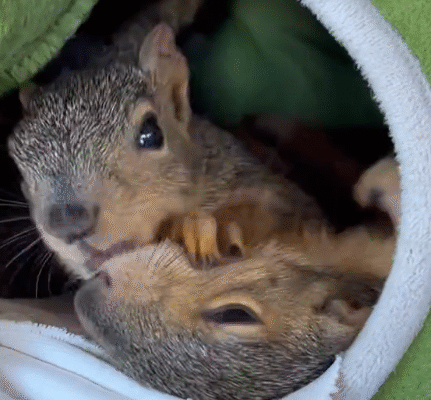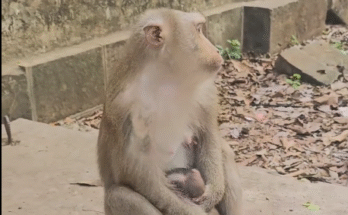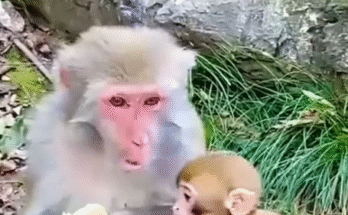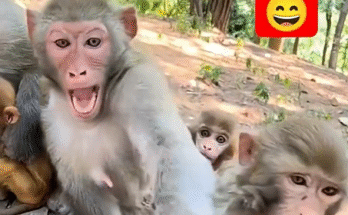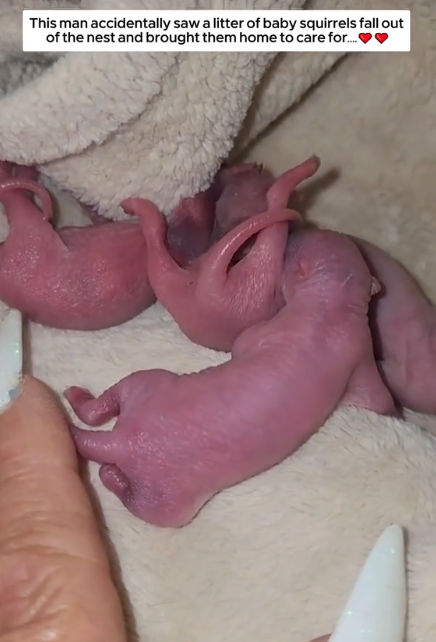
It was a quiet, breezy afternoon in early spring when Thomas, a nature-loving man in his mid-thirties, decided to take a walk through the local park near his home. He had just wrapped up a stressful week at work and needed some peace. The park was calm, the trees swayed gently, and birds chirped from every direction. As he wandered along a familiar trail lined with oaks and maples, a sudden rustling in the branches above caught his attention.
He looked up instinctively, just in time to witness something unexpected. A squirrel’s nest—made of twigs, leaves, and bark—swayed dangerously at the edge of a high branch. A gust of wind, stronger than the last, knocked it loose. To his horror, the nest tumbled, and with it, a small group of baby squirrels—tiny, pink, and fragile—fell from the tree and hit the soft ground below with light thuds.
Thomas rushed over, heart racing. The baby squirrels—five of them—lay scattered among the leaves. They were hairless, their eyes still shut, and their movements slow and jerky. He knew immediately that they were newborns, likely just a few days old. Their mother was nowhere in sight.
He hesitated. What should he do? He knew wild animals should be left to nature, but these babies had clearly been hurt and couldn’t survive on their own. He waited nearby for almost an hour, hoping the mother would come down, but she never did. As the sun began to dip lower in the sky, the temperature dropped. The babies began to shiver.
Feeling an overwhelming sense of responsibility, Thomas gently picked up the tiny creatures, wrapping them in his soft scarf. “Don’t worry,” he whispered. “I’ll take care of you.”
At home, Thomas transformed his guest bathroom into a temporary wildlife nursery. He read up on baby squirrel care all night—how they needed to be kept warm, hydrated, and fed formula made especially for orphaned squirrels. He drove to the nearest animal supply store the next morning and got everything he needed: a heating pad, electrolyte solution, and specialized formula.
He named them: Peanut, Acorn, Maple, Chestnut, and Willow. Each had their own personality. Peanut was the loudest, squeaking whenever hungry. Acorn was calm and cuddly. Maple wriggled the most during feedings. Chestnut liked to climb even before he could walk properly, and Willow was the smallest but the most curious.
Thomas quickly learned that raising squirrels was no easy job. He had to feed them every three hours, even during the night. He set alarms and woke up sleep-deprived, but every time he saw their little bellies full and warm bodies curled up safely in a nest of old T-shirts, it was worth it. He kept track of their growth, weighing them daily, and noting milestones like fur sprouting, eyes opening, and tails puffing out.
By week three, the babies began opening their eyes, and their personalities grew even more distinct. They started crawling and exploring the small space, trying to climb walls and each other. Thomas built a mini climbing structure from cardboard boxes and twigs to help them develop their muscles. His bathroom became a jungle gym.
Friends and neighbors who heard about the rescue dropped by with fruit, old towels, and admiration. Some thought he was crazy for putting so much effort into wild animals, but most were touched by his dedication.
Around the sixth week, the squirrels were almost fully furred and could eat soft fruits and nuts. Thomas introduced them to apples, grapes, and shelled walnuts. Feeding time became playtime. They climbed all over him, perched on his shoulder, and even slept in his hood when he worked from home.
But Thomas knew that eventually, they would need to return to the wild. No matter how much he loved them, squirrels were not meant to be pets. He contacted a local wildlife rehabilitator who guided him through the process of “soft releasing” the squirrels.
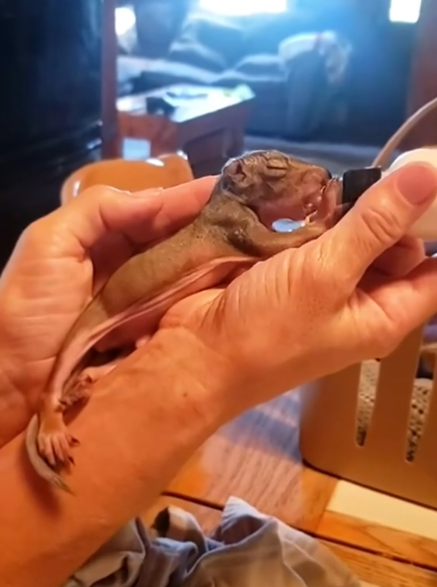
He built an outdoor enclosure in his backyard—spacious and filled with tree branches, hiding spots, and foraging toys. Over the next few weeks, he gradually moved them there during the day and brought them inside at night. They adapted quickly. They learned how to dig, crack nuts, and recognize the sounds of the outside world—birds, wind, and distant traffic.
The day of the release came quietly but emotionally. It had been just over ten weeks since he found them. Now fully grown and independent, the squirrels were ready. Thomas opened the side of the enclosure and waited. At first, none of them moved. Then, one by one, they stepped out—Peanut first, of course—onto the branch that led into the nearby trees.
They didn’t disappear right away. For days, they came back to the yard, often sitting on the fence or in the trees, chirping at Thomas as if to say hello. Sometimes, they’d come down for a snack or to climb onto his shoulder briefly, a sign they remembered him.
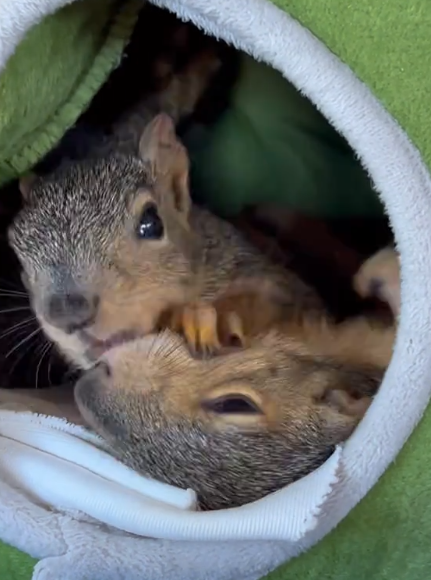
Months passed, and Thomas still saw glimpses of them. Though they had fully reintegrated into the wild, they stayed near his neighborhood. One autumn morning, he looked out into the yard and saw a squirrel dragging leaves up a tree. He smiled. It was Maple—or at least he thought it was.
It brought him peace to know he had given them a second chance. Thomas didn’t set out that day in the park to become a wildlife caretaker, but fate had dropped five helpless lives into his hands, and he answered the call with compassion and patience.
He began volunteering with a local animal rescue center, helping train others in caring for orphaned squirrels, raccoons, and birds. His experience sparked a passion that led him to a new path.
And whenever he walked through the same park where it all began, he looked up at the trees and wondered which of the chattering squirrels above had once been small enough to fit in the palm of his hand.
